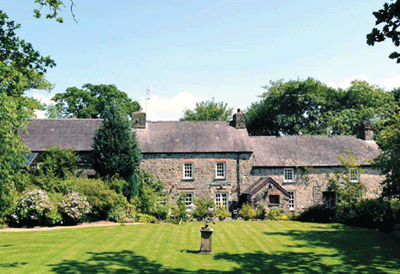Pembrokeshire farmhouse with nearly 100 acres
This traditional stone farmhouse in Wales has additional accommodation options, nearly 100 acres and single bank fishing

Waundwrgi is a traditional Grade II listed Welsh farmhouse in Pembrokeshire built in the late 1700s from stone under a slate roof. The property has deep fireplaces, exposed beams, panelled doors and large sash windows which are typical of the period, and is extremely well-proportioned.
Accommodation in total comprises: Dining room, drawing room, sitting room, study, kitchen, four main bedrooms and three bathrooms.
There is also a separate annexe to the property which has two additional reception rooms and one bedroom and which could be easily accommodated back into the house.

* Subscribe to Country Life and save £1 per week
The detached barn conversion has three bedrooms, a sitting room, a kitchen and a conservatory, as well as its own private garden.
The gardens provide a glorious outlook over a formal garden to the pond where there is an abundance of mature oak trees; to the rear is the kitchen garden and the Barn's private garden. There are stables and a workshop with stairs up to a granary and a large modern barn is used for storage.
The land - 96 acres - includes 78 acres of woodland and 13 acres of pasture and paddocks. The River Marlais forms the south boundary of the property and the property comes with single bank fishing.
Sign up for the Country Life Newsletter
Exquisite houses, the beauty of Nature, and how to get the most from your life, straight to your inbox.
The guide price is £950,000. For further information please contact Knight Frank on 01432 273 087 or visit http://search.knightfrank.com.
* Country houses for sale in Wales
* Follow Country Life on Twitter
-
 A well-connected rural playground with 23 acres on the edge of the South Downs National Park
A well-connected rural playground with 23 acres on the edge of the South Downs National ParkOld House Farm is an impressive family home with a wealth of amenities that would inspire any rural passion.
By Arabella Youens Published
-
 The UK gets its first ‘European stork village’ — and it's in West Sussex
The UK gets its first ‘European stork village’ — and it's in West SussexAlthough the mortality rate among white storks can be up to 90%, the future looks rosy for breeding pairs in southern England.
By Rosie Paterson Published

